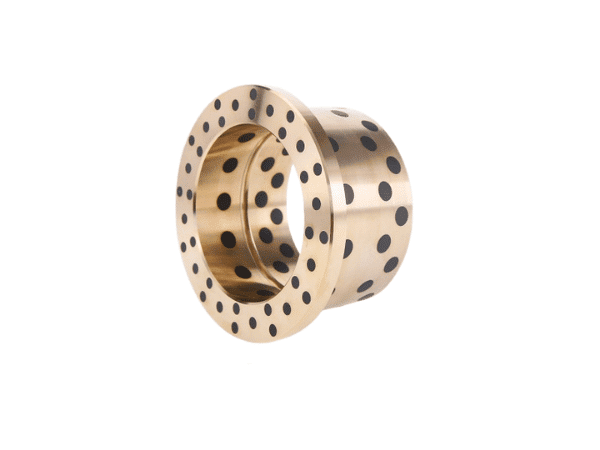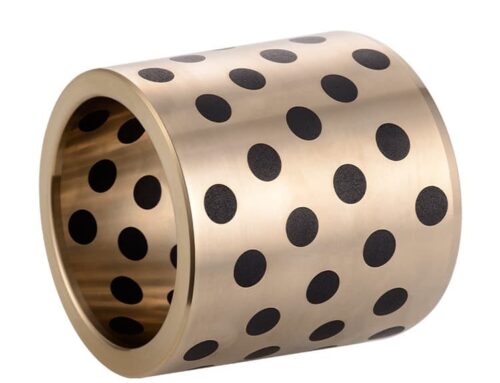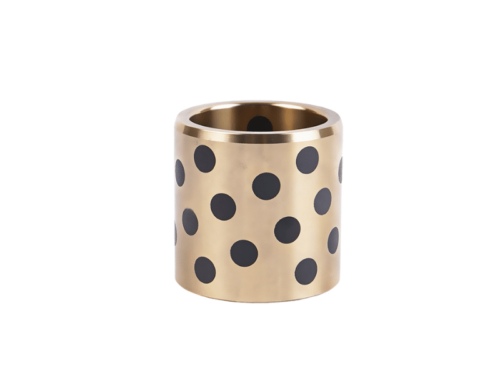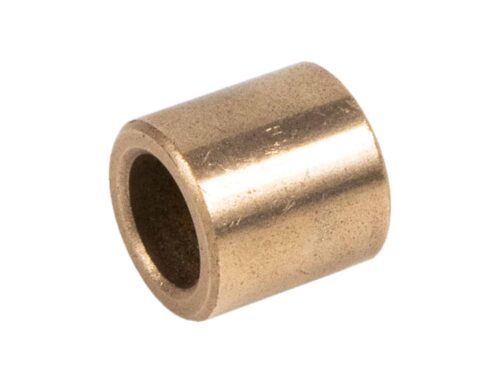Bronze Plugged Graphite Bushings for Water/Dam Gates: Enhancing Operational Efficiency
Bronze Wear Plate Material, Grease Groove Wear Plates, Bronze Bush With Graphite for Fixed wheel gate (Roller gate)
Grease groove wear plates are used to hold lubricating grease and reduce friction and wear on machinery parts. They typically have grooves machined into them to provide a path for the grease to spread across the surface of the wear plate, thereby extending the life of both the wear plate and the corresponding part. These plates are available in various materials such as bronze and steel, and they can be customized with features like hole patterns, pockets, chamfers, and cutouts to maximize protection. When the use of wear plates with graphite is not an option, conventionally lubricated grease groove wear plates are a good choice . The grooves in these plates provide a path for the grease to spread across the surface, reducing friction and wear, and extending the life of the plates and the corresponding parts. Water dam gates bushings are important components used in hydropower plants and dam infrastructure. These bushings play a crucial role in ensuring the smooth operation and maintenance of water dam gates. Water and dam gates play a critical role in controlling water flow, enabling efficient hydroelectric power generation, and ensuring effective flood management. These gates comprise several essential components, such as bushings, pins, and housings, which significantly contribute to their functionality and durability. One company at the forefront of providing cutting-edge solutions for these key elements is VIIPLUS. Manufacturers: We provide a wide range of bushings tailored for use in dam gate applications, ensuring reliable and efficient performance.
BRONZE WEAR PLATE, Custom Made Sliding/Wear Plates
What Type of Bronze to Use for Wear Plates?
VIIPLUS offers a robust line of self-lubricating oilless bushings, housings, and shafts specifically designed for water and dam gate applications. Their Bronze Plugged Graphite Bushings, in particular, are revolutionizing the industry with their unique properties and benefits.
Purpose of Water Dam Gates Bushings: Water dam gates bushings are designed to provide support, reduce friction, and allow for the controlled movement of dam gates. They help in opening and closing the gates smoothly. Materials: These bushings are typically made from various materials such as bronze, graphite, and other self-lubricating materials to minimize wear and friction.
Key Features and Advantages of VIIPLUS Bronze Plugged Graphite Bushings
Product Quality Index
Energy Generation
The Integral Role of Bronze Components in Hydraulic Systems: Bronze Graphite, Cast Bronze, and their Applications
Hydraulic systems form the backbone of various industries, from construction and agriculture to heavy machinery and aerospace. At the heart of these systems lie numerous components that ensure smooth, efficient operation. Of these components, those made of bronze, specifically bronze graphite and cast bronze, play a crucial role. These include cylinder heads, seal rings, piston shoes, and guide bushings.
Applications of VIIPLUS: Bronze Plugged Graphite Bushings tailored to your individual needs.
Dam gate bearings typically utilize high-strength bronze alloy materials. Specifically, these bearings combine the low-friction properties of PTFE (polytetrafluoroethylene) with the rigidity of high-strength bronze alloys. Bronze alloys are widely chosen for their corrosion resistance, high strength, and good mechanical properties.
Regarding the specific types of bronze alloys mentioned in the document:
- Aluminum Bronze: Known for its high load-bearing capacity, extensively used in both freshwater and saltwater applications, and highly resistant to electrochemical corrosion.
- Manganese Bronze: Widely employed in freshwater applications, particularly in environments requiring toughness and impact resistance.
- Tin Bronze and Leaded Tin Bronze: Typically used for applications with lower to medium bearing loads, providing good embeddability and greater tolerance for shaft misalignment.
- High-Leaded Tin Bronze (B584-C93200): With a strength of 1500 psi and a toughness of 24,000 psi-ft/min.
- Aluminum Bronze (B148-C95400): Featuring a strength of 4000 psi and a toughness of 48,000 psi-ft/min.
- Nickel Aluminum Bronze (B148-C95500): Offering a strength of 6000 psi and a toughness of 72,000 psi-ft/min.
- Manganese Bronze (B584-C86300): With a strength of 8000 psi and a toughness of 80,000 psi-ft/min.
The specific properties of these alloys, such as corrosion resistance, strength, hardness, and fatigue resistance, make them ideal choices for dam gate bearings. Bearings utilize these bronze alloys embedded with PTFE solid lubricant to provide lasting lubrication performance and maintenance-free operation.
Water/dam gate bushings, pins, and housings are essential components for water gate operations.
VIIPLUS offers self-lubricating oilless bushings, housings, and shafts specifically designed for water/dam gate applications. These components come with numerous advantages:
- Self-lubricating properties both above and underwater
- Dimensions up to 4000mm inner diameter
- Customizable according to your design specifications
- Quick production and availability
The Use of Self-Lubricating Bronze Bushings in Dams
In dams, self-lubricating bronze bushings are primarily used in critical components such as working radial gate support bearings, sluice gate bearings, and turbine bearings. These parts require high corrosion resistance and the ability to withstand water immersion. Due to the challenging working environment, these bushings must endure heavy loads, low speeds, and reciprocating or oscillating movements, where lubrication is difficult, and oil films are hard to maintain. They must also resist water erosion and other chemical substances.
According to information from various sources, VIIPLUS applies its self-lubricating bronze bushing products to the working radial gate support bearings, sluice gate bearings, turbine bearings, and other components that require corrosion resistance and water immersion endurance. This demonstrates that self-lubricating bronze bushings, due to their excellent corrosion resistance and self-lubricating properties, are widely used in these critical parts of dams.
Key Features and Advantages of Self-Lubricating Bronze Bushings
-
Long-Term Operation Without Oil Lubrication: These bushings can function for extended periods without the need for oil lubrication, making them ideal for hard-to-reach places.
-
Suitable for Heavy Load and Low-Speed Conditions: They exhibit excellent wear resistance and very low friction coefficients, perfect for environments with heavy loads and low speeds.
-
Ideal for Reciprocating, Rotating, and Intermittent Movements: These movements make it difficult for oil films to form, but self-lubricating bushings excel in such conditions.
-
Corrosion and Chemical Resistance: They can withstand exposure to corrosive environments and various chemicals, ensuring long-term durability.
-
Wide Temperature Range: Suitable for temperatures ranging from -40℃ to +300℃, these bushings can handle extreme conditions.
-
Maintenance-Free and Long Lifespan: The durability and low maintenance requirements make them a cost-effective solution for dam applications.
These characteristics make self-lubricating bronze bushings an ideal choice for bearing materials in hydraulic engineering equipment, such as dams. Their ability to provide reliable performance under harsh conditions ensures the efficiency and longevity of critical dam components.
Applications include:
- Side roller bushings, pins, and rollers
- Stoplog and regulating gate bushings, pins, and wear plates
- Self-lubricating sliding bars
- Spillway radial gate hinge bushings
- Fishway gate bushings
- Sandflush and drain bushings
- Headpond and tailrace bushings
- Self-lubricating spherical plain bearings
- Valve bronze seal rings and rollers
- Butterfly valve upper, middle, and lower bushings
Exploring the Vital Role of Dam Gate Bushings
Dam gates are essential components in the management and control of water flow in reservoirs, spillways, and other hydraulic structures. Each type of dam gate is designed to perform specific functions under varying operational conditions. Integral to the effective performance of these gates are bushings, which reduce friction, support the structure, and facilitate smooth operation. In this blog post, we’ll explore the common types of dam gates and highlight the significance of bushings in their operation.
1. Radial Gates (Tainter Gates)
Description: Radial gates are curved gates that pivot on horizontal axes. Applications: Often used in spillways to control large water flows. Advantages: These gates are efficient in managing high water pressure and large volumes, thanks to their robust design and reliable operation.
2. Vertical Lift Gates (Sliding Gates)
Description: These gates move vertically up and down within guides. Applications: Commonly found in spillways, intake structures, and bottom outlets. Advantages: Vertical lift gates feature a simple design, reliable operation, and effective performance in both open and closed positions.
3. Stoplog Gates
Description: Stoplog gates consist of removable beams or logs placed one above the other to block water flow. Applications: They provide temporary closures for maintenance and inspection of dam components. Advantages: These gates are flexible and easy to install or remove, making them ideal for temporary use.
4. Roller Gates
Description: Roller gates roll on tracks to open and close. Applications: Used in spillways and sluiceways. Advantages: Capable of handling large water volumes, roller gates offer fine control over water flow.
5. Drum Gates
Description: Drum gates are cylindrical gates that rotate around their horizontal axes. Applications: Typically used in spillways to control water discharge. Advantages: These gates automatically adjust to water levels, providing consistent control.
6. Sector Gates
Description: Sector gates are curved gates that rotate around a central pivot. Applications: Found in navigable channels and lock structures. Advantages: They efficiently control water flow and allow vessel passage.
7. Miter Gates
Description: Miter gates close in a V-shape, resembling a miter joint. Applications: Commonly used in lock chambers and navigable water channels. Advantages: Miter gates effectively withstand water pressure and provide a tight seal.
8. Flap Gates
Description: Flap gates are hinged gates that open and close based on water pressure differences. Applications: Used in outfalls and flood control structures. Advantages: They automatically respond to changing water levels, requiring minimal manual operation.
9. Bascule Gates
Description: Bascule gates pivot around a horizontal axis and are typically raised or lowered by a counterweight. Applications: Utilized in navigation locks and flood control. Advantages: These gates offer quick operation and effective control of water flow.
10. Crest Gates
Description: Crest gates are located at the crest of a spillway, designed to control overflow. Applications: Commonly used in reservoirs and spillways. Advantages: They provide precise control of water levels and overflow.
The Role of Bushings in Dam Gates
Bushings play a critical role in the functionality of dam gates. They are designed to reduce friction, provide support, and enhance the smooth operation of the gates. The choice of bushing material and design can significantly impact the performance and longevity of the gates. Self-lubricating bushings, for example, offer the advantage of reduced maintenance and improved reliability, especially in underwater applications.
Key Benefits of High-Quality Bushings:
- Self-Lubricating Properties: Ensures smooth operation with minimal maintenance.
- Durability: High-quality bushings can withstand harsh environmental conditions.
- Customization: Bushings can be tailored to meet specific design requirements.
- Efficient Performance: Reduces friction and wear, recognized to longer service life.
In conclusion, the selection of the appropriate dam gate and corresponding bushings is crucial for the efficient and reliable operation of water control structures. By understanding the unique advantages of each type of gate and the importance of high-quality bushings, engineers and operators can ensure the optimal performance of these critical infrastructure components.
The Robust Solution of Bronze Alloy in Self-Lubricating Bearings
The use of bronze alloy in self-lubricating bearings, combined with solid lubricants, offers a robust solution for applications that demand high mechanical strength, load capacity, and reliable lubrication. Here’s how these features are beneficial across various industries:
Mechanical Strength
The bronze alloy provides the necessary strength and durability to withstand the pressures and loads that the bearing will encounter. This is particularly important in applications like port machinery, mining machinery, and dam gates, where heavy loads and high stresses are common.
Loading Capacity
The high load-bearing capacity of bronze alloys allows the bearings to support substantial weights without deformation or failure. This is crucial for the structural integrity and performance of equipment like dam gates and heavy machinery.
Continuous Lubrication
The solid lubricants embedded within the bronze matrix provide a continuous source of lubrication. This is especially important in environments where regular maintenance is challenging or where the machinery operates in harsh conditions, such as in mining operations or port facilities.
Frequent Restarting Operations
In applications like plastic injection machines and port machinery, equipment often undergoes frequent starts and stops. The self-lubricating properties of bronze with solid lubricants ensure that the bearings remain well-lubricated during these operations, reducing wear and tear and extending the service life of the equipment.
Reliable Lubricating System
The combination of bronze alloy and solid lubricants establishes a reliable lubricating system. This is essential for maintaining performance and reducing the risk of failure in critical applications, such as the operation of dam gates, where reliability is paramount for safety and operational efficiency.
Specific Applications
Plastic Injection Machine Toggle and Tie Bar
In the plastics industry, the toggle and tie bars of injection molding machines are subject to high loads and require smooth operation for precision molding. The self-lubricating bronze bushings help to ensure that these components move smoothly and withstand the pressures exerted during the molding process.
Port Machinery
Port cranes and other heavy machinery used in port operations are exposed to corrosive environments and heavy loads. The corrosion resistance and load-bearing capacity of bronze alloy bushings with solid lubricants make them ideal for these conditions.
Dam Gate
Dam gates require reliable and durable bearings to control water flow effectively. The self-lubricating bronze bushings provide the necessary performance and longevity in this critical application.
Mining Machinery
Mining equipment often operates in harsh environments with high loads and limited access for maintenance. The self-lubricating properties of bronze bushings with solid lubricants reduce maintenance requirements and ensure the machinery operates reliably.
Conclusion
The combination of bronze alloy and solid lubricants in self-lubricating bearings is well-suited for applications that require a balance of strength, load capacity, and continuous lubrication. This makes them ideal for use in various industries, including plastics manufacturing, port operations, dam management, and mining, where performance, reliability, and durability are key.
By incorporating self-lubricating bronze bearings, industries can enhance the longevity and efficiency of their equipment, ensuring smooth and reliable operation even in the most demanding conditions.
Bearings play a critical role in hydropower plants, particularly in turbines and dam gates, where they endure challenging conditions such as high loads, exposure to water, and limited maintenance intervals. Here’s an overview of bearings used in hydropower applications:
Hydro Turbine Bearings:
Hydro turbine bearings are essential components supporting the turbine shaft and managing high thrust loads at low operating speeds. These bearings fall into two main types:
Thrust bearings: They bear the vertical load of the turbine and generator shaft, available in equalized or non-equalized configurations based on specific needs.
Guide bearings: These maintain radial shaft alignment and can feature fixed geometry or tilting pad designs.
Many hydro turbine bearings employ self-lubricating materials or water lubrication to reduce maintenance and environmental impact.
Dam Gate Bearings:
Dam gate bearings function in harsh environments exposed to water, dust, and heavy loads, requiring robust designs for long-term reliability. Key features include:
Corrosion resistance: Materials like high-strength copper alloys or stainless steel are common for durability in corrosive settings.
Self-lubrication: Bearings often integrate solid lubricant plugs or self-lubricating materials to minimize maintenance.
Misalignment compensation: Spherical plain bearings are popular for accommodating misalignment and evenly distributing loads.
Specialized Bearing Designs: we provide specialized bearings for hydropower:
viiplus offers tilting pad bearings for hydro turbines, a longstanding industry standard.
viiplus radial spherical graphite plain bearings for dam gates, capable of handling axial and radial loads while damping vibrations and solutions combining water-lubricated graphite bearings for simplified maintenance and reduced downtime.
Materials and Lubrication:
Hydropower bearings utilize advanced materials and lubrication techniques:
Self-lubricating materials: Bearings often incorporate PTFE, graphite, or other solid lubricants to minimize friction and maintenance.
Water lubrication: Some bearings operate with water as a lubricant, eliminating the need for oil and reducing environmental impact.
Corrosion-resistant alloys: High-strength copper alloys and stainless steel withstand the aquatic environment’s corrosive effects.
Maintenance and Longevity:
Hydropower bearings are designed for extended operation with minimal upkeep:
Regular inspections and condition monitoring ensure optimal performance and early detection of potential issues.
In summary, bearings for hydropower plant turbines and dam gates are specialized components engineered to endure severe conditions while delivering reliable, long-term performance. Advanced materials, self-lubricating designs, and corrosion-resistant alloys help minimize maintenance and environmental impact in these critical infrastructure applications.
The Evolution of Hydro Dam Gate Efficiency: PTFE-Filled Self-Lubricating Bearings
Self-Lubricating: Many water dam gates bushings are self-lubricating, reducing the need for frequent maintenance and greasing. This is crucial for efficient and long-term operation. Applications: Water dam gates bushings are used in various hydroelectric power plants and dam systems worldwide.
In the hydropower industry, maintenance and operational efficiency are crucial factors that dictate overall productivity and longevity of equipment. Pioneering this evolution towards optimization, self-lubricating bearings featuring a proprietary PTFE-filled solid lubricant embedded in a cast bronze backing have emerged as a game-changer. These innovative bearings have found extensive application in hydro dam gates and water control mechanisms, revolutionizing their operation and maintenance dynamics.
PTFE-filled self-lubricating bearings represent an innovative step forward in the hydropower industry. By boosting operational efficiency and reducing maintenance requirements, these bearings contribute significantly to sustainable and cost-effective power generation. The industry’s future undeniably lies in the direction of such self-sufficient, high-performance components, setting new benchmarks in efficiency and durability.
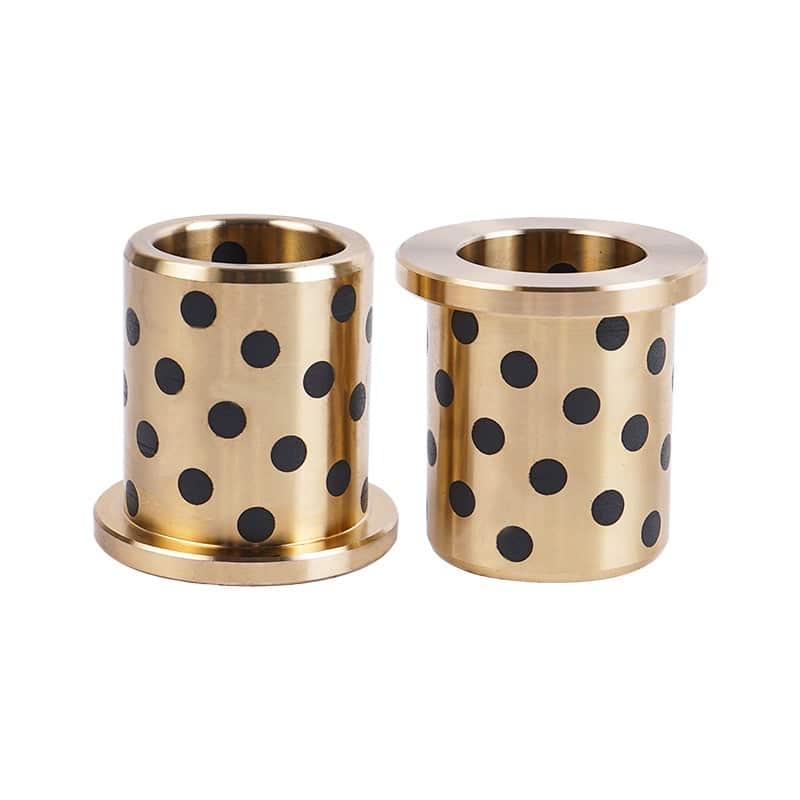
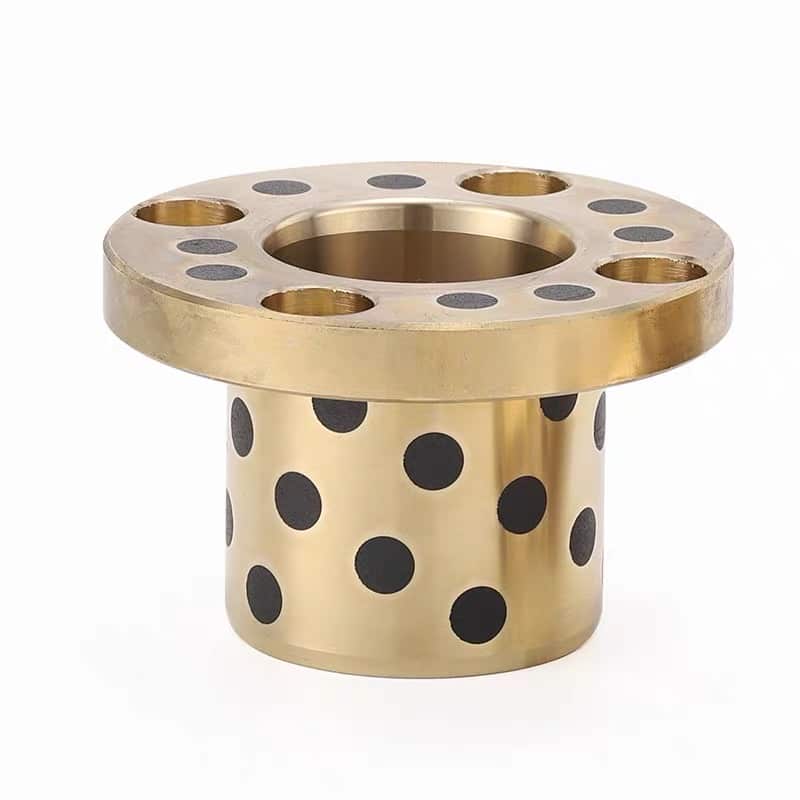
Understanding PTFE-Filled Self-Lubricating Bearings
Self-lubricating bearings have a unique structure that differentiates them from traditional bearings. They comprise a bronze backing, ensuring superior load-bearing capacity and corrosion resistance, which is critical for applications exposed to water such as dam gates. However, the innovation lies in the proprietary PTFE-filled solid lubricant embedded within this backing.
Polytetrafluoroethylene (PTFE) is a synthetic fluoropolymer with exceptional properties, including high melting point, low friction, and excellent chemical resistance. When used as a filler in the solid lubricant, it imparts self-lubricating properties to the bearing.
Benefits: The use of specialized bushings in water dam gates offers benefits such as reduced maintenance costs, improved gate operation, and increased longevity of the infrastructure
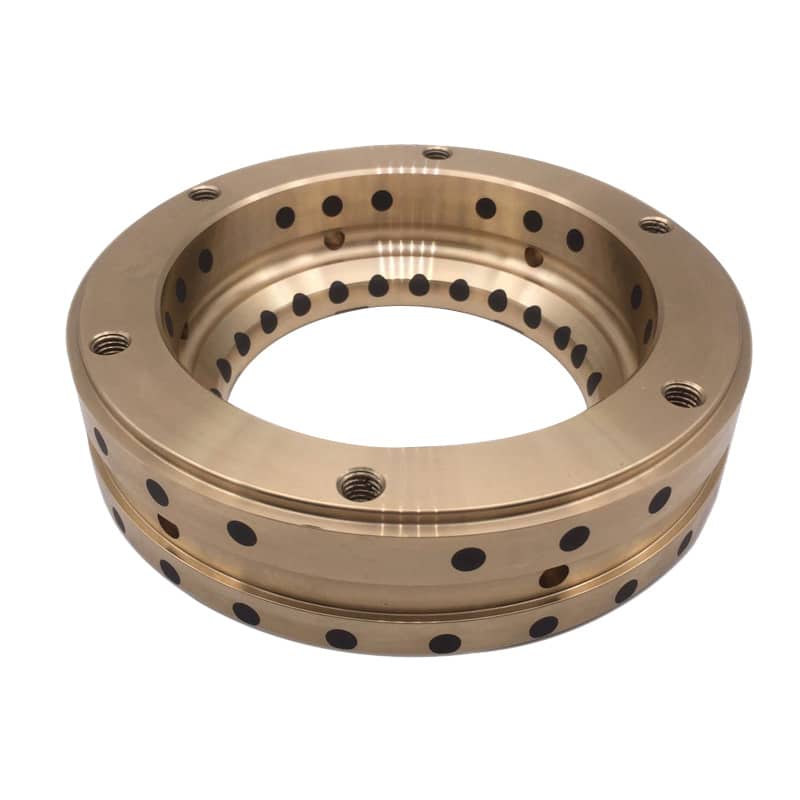
Enhancing Hydro Dam Gate Operations
PTFE-filled self-lubricating bearings significantly enhance the efficiency of hydro dam gate operations. These bearings reduce friction between moving parts, ensuring smooth and efficient movement of the dam gates. The reduction in friction not only boosts operational efficiency but also minimizes wear and tear on the gates, thereby extending their lifespan.
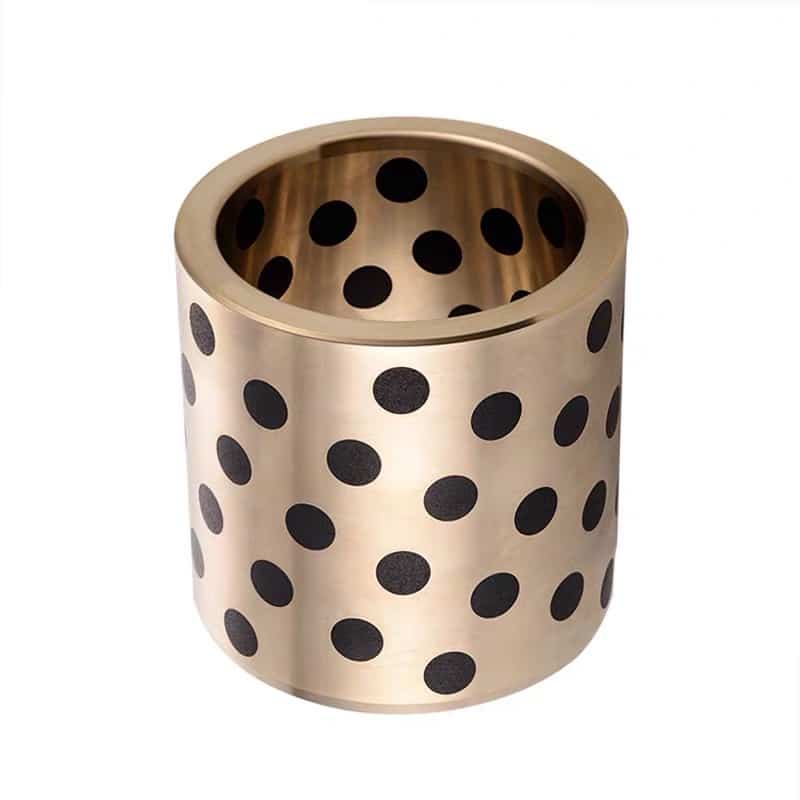
Low coefficient of friction
Another critical advantage is the self-lubricating property. Traditional bearings require regular lubrication to function optimally, necessitating scheduled maintenance and increasing operational costs. However, the PTFE-filled self-lubricating bearings, with their built-in lubricant, essentially eliminate the need for frequent lubrication. This aspect significantly reduces maintenance efforts and costs, enhancing the overall productivity of hydro dam operations.
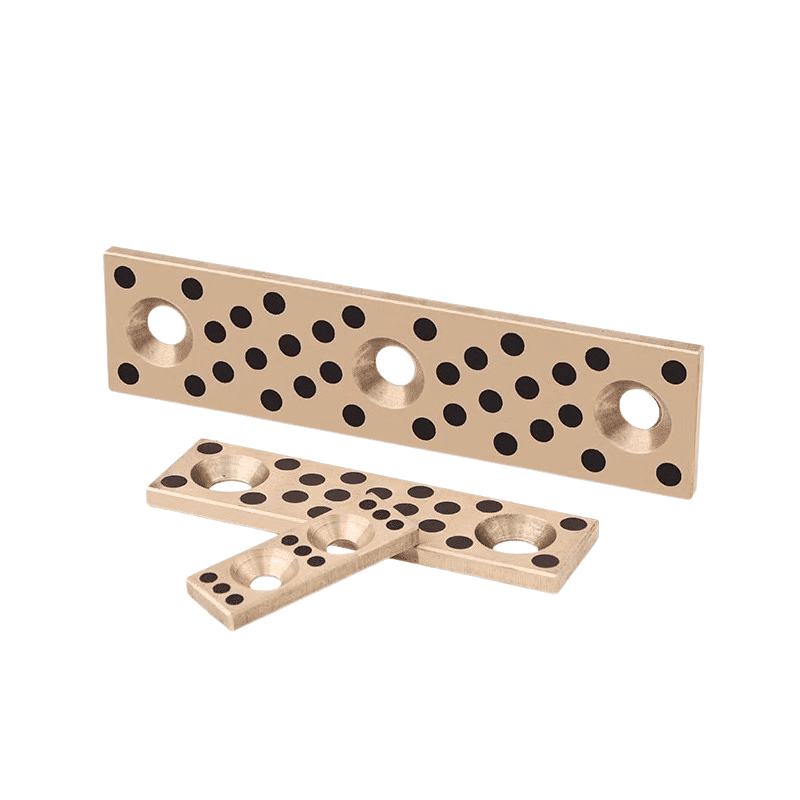
Versatility in Water Applications
Beyond hydro dam gates, these PTFE-filled self-lubricating bearings are also suitable for various water-related applications due to their excellent water and chemical resistance. They can be employed in water control mechanisms, irrigation systems, and water treatment plants, among other applications.
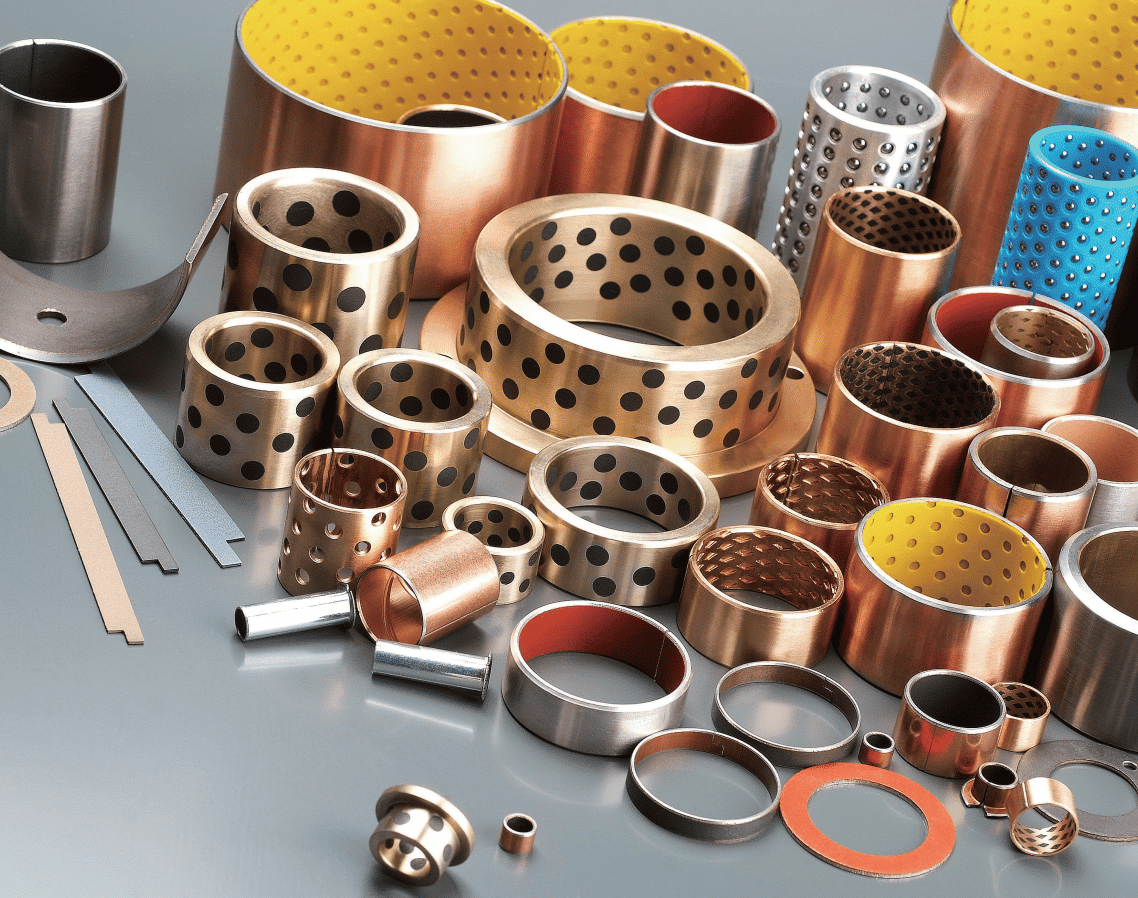
BRONZE WEAR PLATE MATERIAL
Special parts request

